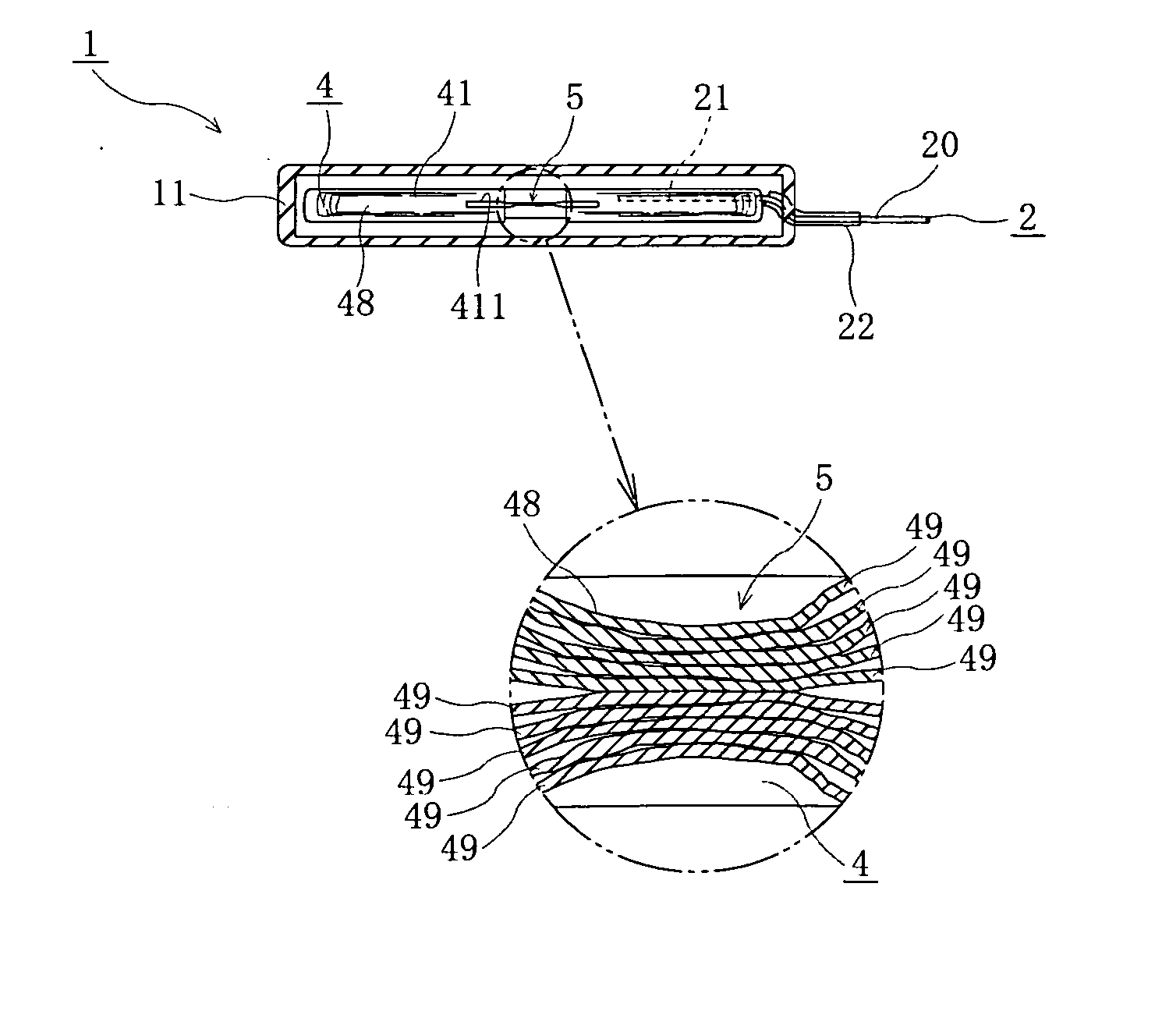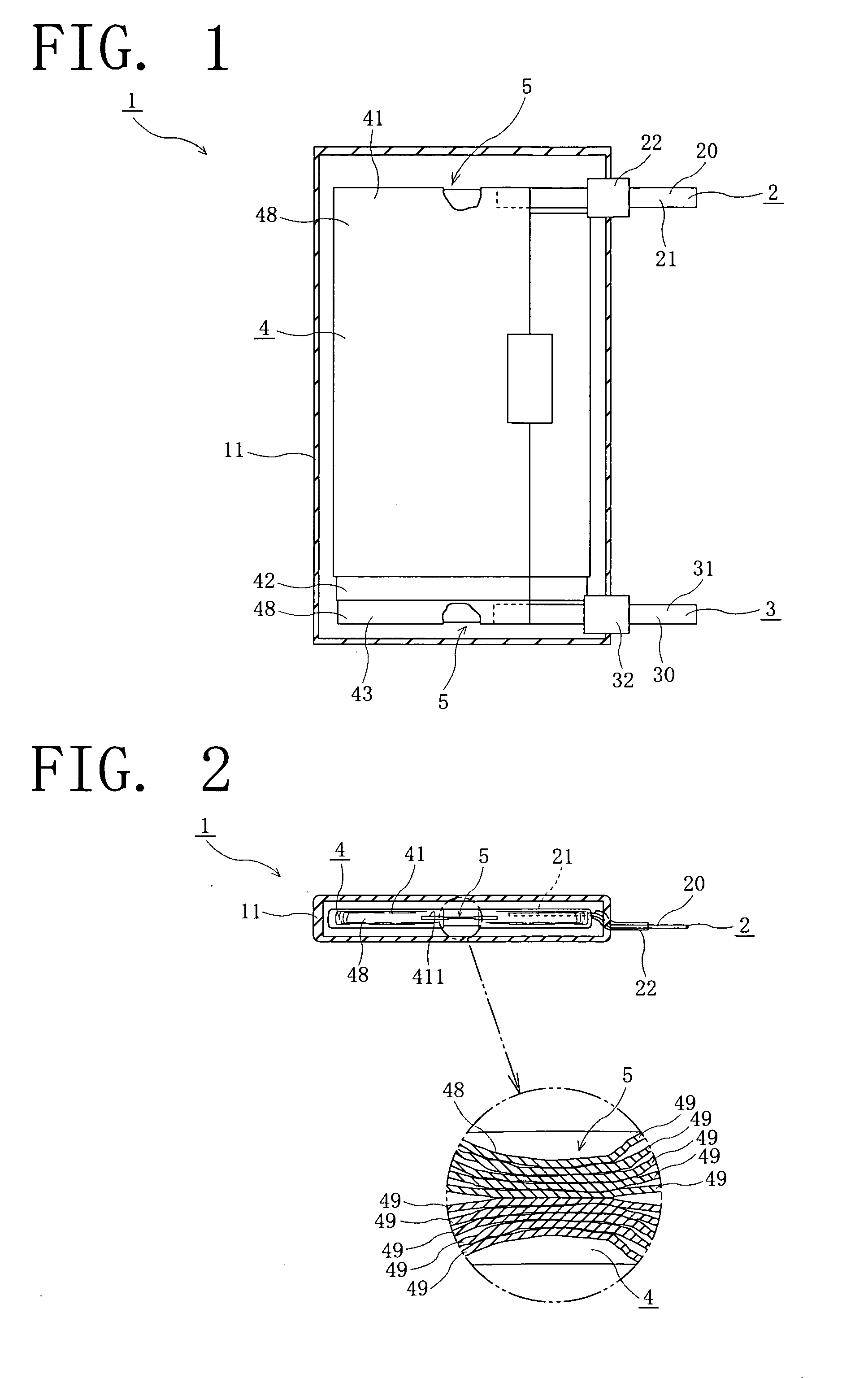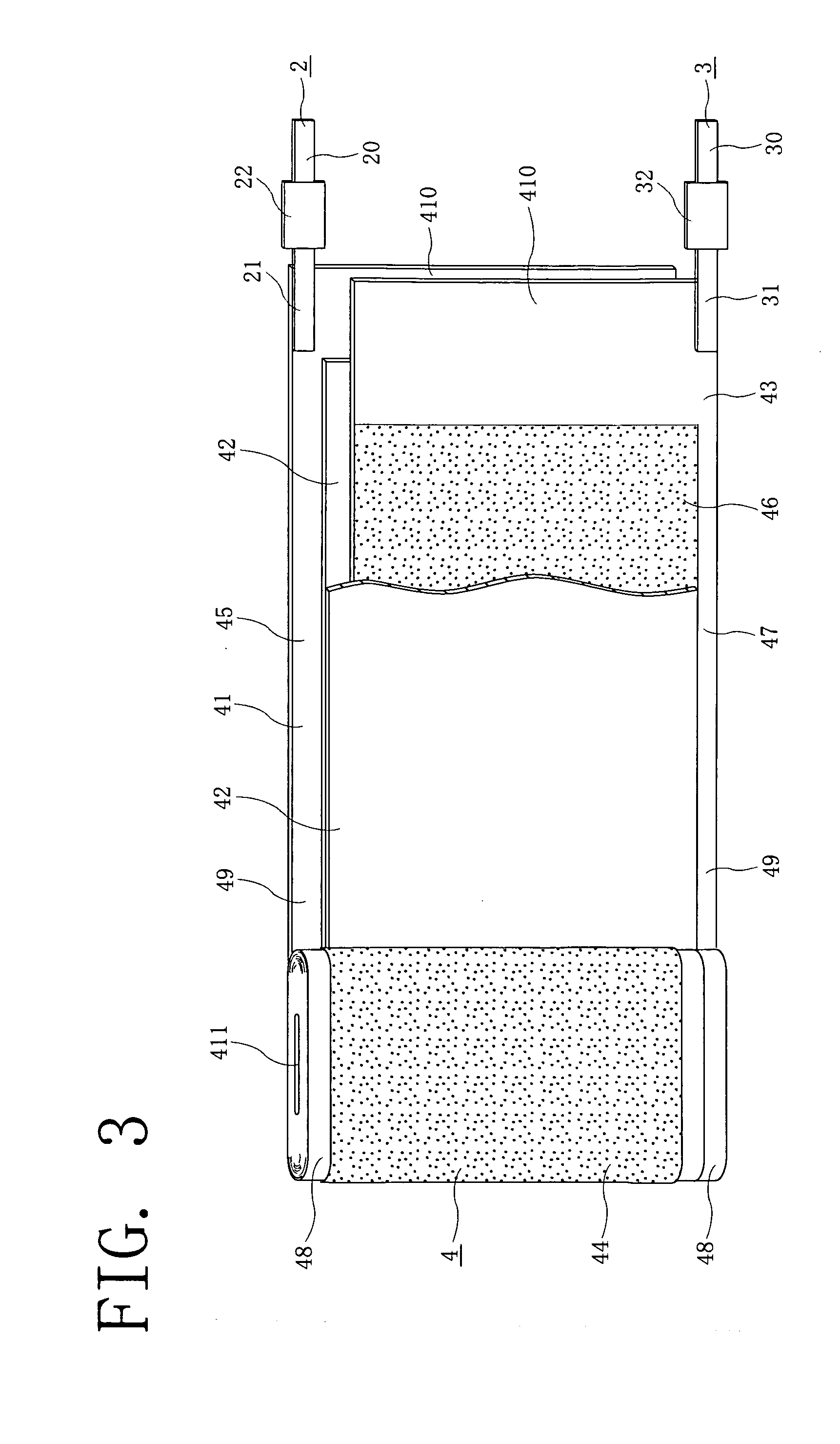Secondary cell
a technology of secondary cells and cells, applied in the field of secondary cells, can solve the problems of low productivity, difficult to superpose a plurality of positive electrode sheets, and reduce the efficiency of current collection performed by the electrode tab, and achieve the effects of improving current collection efficiency, simple construction, and easy production
- Summary
- Abstract
- Description
- Claims
- Application Information
AI Technical Summary
Benefits of technology
Problems solved by technology
Method used
Image
Examples
Embodiment Construction
[0036] The present invention as applied to lithium polymer secondary cells will be described below with reference to the drawings. The lithium polymer secondary cell embodying the present invention, as shown in FIGS. 1 and 2, comprises an outer body 11 which is formed by a laminate sheet comprising two resin layers and an aluminum layer interposed between the resin layers, and a rolled-up electrode unit 4 which is accommodated into the outer body 11.
[0037] The rolled-up electrode unit 4 has a flat shape formed perpendicularly to its winding axis. Electrode tabs 2, 3 in the form of a strip are attached to the positive electrode 41 and the negative electrode 43 of the rolled-up electrode unit 4, respectively. Outer ends of the two electrode tabs 2, 3 project from the side portion of the outer body 11 to the outside. The outer ends form a pair of positive and negative electrode terminal portions 20, 30, through which power generated by the rolled-up electrode unit 4 is delivered to th...
PUM
| Property | Measurement | Unit |
|---|---|---|
| area | aaaaa | aaaaa |
| length | aaaaa | aaaaa |
| length | aaaaa | aaaaa |
Abstract
Description
Claims
Application Information
 Login to View More
Login to View More - R&D
- Intellectual Property
- Life Sciences
- Materials
- Tech Scout
- Unparalleled Data Quality
- Higher Quality Content
- 60% Fewer Hallucinations
Browse by: Latest US Patents, China's latest patents, Technical Efficacy Thesaurus, Application Domain, Technology Topic, Popular Technical Reports.
© 2025 PatSnap. All rights reserved.Legal|Privacy policy|Modern Slavery Act Transparency Statement|Sitemap|About US| Contact US: help@patsnap.com



